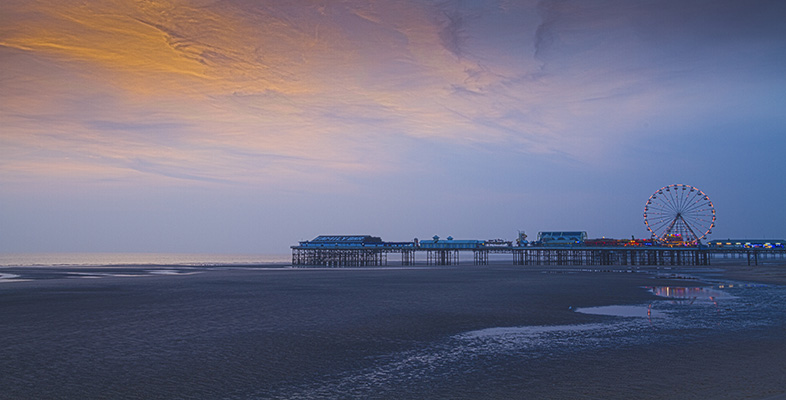2.3 Climate change: survival at stake
Despite efforts to define it, the boundary between land and sea is constantly changing. In the long run the combination of rising sea level, sinking land and possible major storms, such as the one that devastated the Essex coast in 1953 (Figure 16), indicates a battle that the sea must ultimately win.
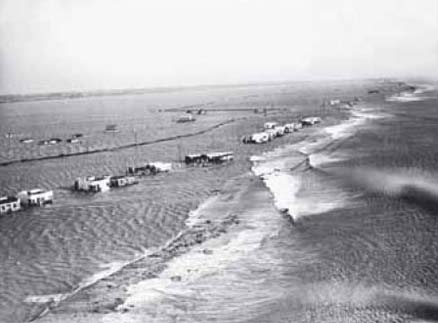
The invisible threat of global warming is widely regarded as inevitable, provoked by the increased release of greenhouse gases, and likely to result in climatic extremes and significant rises in sea level within one or two generations. Predictions by the Intergovernmental Panel on Climate Change (IPCC, 2001) indicate that, by the end of this century, global sea level could have risen by as much as 0.88 metre as a result of global warming.
In addition to a global sea level rise, the Blackwater estuary is also affected by a local change in sea level. During the last glacial Stage, a thick layer of ice covered the whole of central and northern Britain. When this ice melted, and the weight on the land was reduced, the land in northern Britain began to rise (a process called ‘glacial rebound’), tilting Britain and causing part of the south, including the Blackwater estuary, to sink. This caused a relative rise in sea level in this area, which is still continuing today, at a rate of about 0.15 metre a century. So for the Blackwater estuary, the rise in sea level is caused both by global warming and local glacial rebound.
There is much uncertainty about the scale, timing and impact of climate change. However, appreciation of the likelihood of significant changes in the foreseeable future has prompted recognition that response in some form is necessary if the possible consequences to human and other forms of life are to be avoided. We focus here on some of the uncertainties and possible effects of climate change, and on what the nature of the response might be.
Click here [Tip: hold Ctrl and click a link to open it in a new tab. (Hide tip)] to view, 'Land lying below the five metre mark at the Blackwater estuary, adapted from the Blackwater Estuary Management Plan'.
For any estuary, such as the Blackwater, where much of the surrounding land area lies within a few metres of the sea (see the five metre contour around the Blackwater coast in Figure 20), any consistent rise in sea level could lead not only to destruction of the saltmarshes and widespread flooding, but inundation of agricultural and urban areas beyond. However, on a geological timescale, we have seen that sea level change of over 100 metres has occurred in the past. Part of the present-day concern is the rate of change, which is much faster now than at any time since the rapid warming and associated sea level rise at the end of the last glacial Stage at 11,500 BP.
In the Blackwater estuary, human response is in the form of various methods of coastal management. Defensive ‘hard’ sea walls are expensive, inflexible and difficult to maintain and are now used only to protect areas of urban development (Figure 7). Elsewhere ‘soft’ forms of coastal protection are used. For example, using brushwood polders to provide shelter from waves, using sunken Thames lighters as wavebreaks, or recharging the foreshore using dredged materials to break the force of the waves offshore (Figures 17, 18.
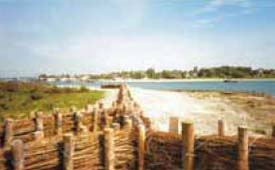
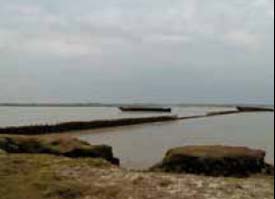
In several parts of the estuary new saltmarsh is being created in various schemes described as ‘managed retreat’ or ‘coastal realignment’. One such scheme, managed by the Essex Wildlife Trust, is at Abbotts Hall Farm, an area of arable farmland adjacent to Old Hall Marshes (Figure 19). The idea is to breach the three kilometre wall at five points, allowing ingress and dispersal of the sea, gradually transforming the low-lying meadows back into saltmarsh. On the rest of the farm, hedgerows, grassland margins, ponds and woodland are being created to encourage greater biodiversity. Under government-sponsored arable reversion schemes, financial incentives are offered to farmers willing to manage their land to enhance its value for conservation. Although coastal realignment has been successful in some places, such as Orplands (Figure 20), its impacts elsewhere may be unpredictable and uncertain.
The present Blackwater coast has been created by a combination of natural and human responses to change. For several centuries sea walls have defined the border between reclaimed land and sea, while gradually, on the seaward side of the walls, the incremental loss of most of the saltmarsh has removed the first line of defence. Recently, the value of the saltmarsh biodiversity and the protection it affords has led to efforts to prevent further losses. At present, erosion far exceeds the creation of saltmarsh. Ultimately, if local sea level rise continues at its present rate of six millimetres per year, nothing can prevent the inundation of the Essex marshlands and areas well inland. Climate change will produce a range of problems affectingall areas, causing loss of species or livelihoods. Drought-prone areas are likely to become larger and might occur just as they did in the past in the area that is now marshlands. Climate change could also lead to more extreme events, such as more frequent and heavier storms, and high sea levels (storm surges) which add to the flooding caused by sea level rise.
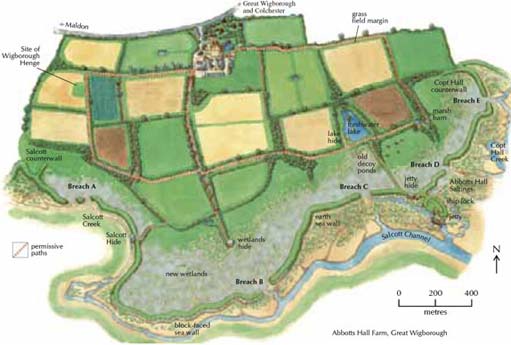
Although we can adapt to the effects of climate change by retreating (e.g. from coastal areas), by accommodating them (e.g. growing flood-tolerant crops) and by protecting against them (e.g. building sea walls), we cannot prevent such effects. On a global scale, roughly one billion people live at or just above sea level, and cities such as London, New York, Tokyo, Bangkok and Shanghai could be submerged. Poorer countries are particularly vulnerable and have limited affordable options. Some, like the low-lying Pacific island of Tuvalu, face extinction and, in 2002, some of its population have already moved to New Zealand.
We can only slow the process of climate change by reducing greenhouse gas emissions, notably carbon dioxide emitted into the atmosphere from various sources such as fossil fuel power stations. However, before undertaking any drastic or expensive actions, governments need to know how good the predictions of the effects of global warming will be – how accurate are they? To examine this we need to look at predictions in more detail. The Intergovernmental Panel on Climate Change (IPCC) report of January 2001 gave an estimate for a maximum global sea level rise of 0.88 metre by the end of the century. However, the minimum estimated change is only 0.09 metre. These predictions are made by making various assumptions, such as rates of greenhouse gas emissions and their re-absorption by, for example, vegetation (Blackmore and Barratt, 2003). You may wonder what is the use of a prediction that gives such a large range, 0.09–0.88 metre. This is a real problem, and such a range is an indication of the uncertainty of the result.
However, as uncertain as results like these are, they have to be used as a basis for policy decisions on global warming. If we waited until the end of the century to see whether sea level will rise by 0.09 metre or by 0.88 metre and then decided what to do about it, it would obviously be too late to stop it happening. It could be argued that it would be better to plan for sea level rise now. This is the basis of the precautionary principle set out in the World Charter for Nature adopted by the UN General Assembly in 1982 – ‘lack of scientific certainty should not be used as a reason for postponing measures to prevent suspected or threatened environmental damage’. The principle has subsequently been incorporated into various international conventions on the protection of the environment. The strength of the precautionary principle is that it may provide a basis for action when science is unable to give a clear answer. In the Blackwater estuary the rise in sea level is already sufficiently palpable for precautionary action to be taken.
Human responses to environmental change may be conceived in terms of reducing risk. We define risk as the probability of a hazard occurring at some future point in time or as a result of a particular action. An example of the former might be the risk of a coastal habitat being destroyed within a hundred years. The risk of saltmarsh loss through building a sea wall is an example of risk resulting from a particular action. Thus risk implies a probability of change, and therefore requires prediction of the likely outcomes of response. The confidence that can be placed in any prediction depends on the level of uncertainty about the processes responsible for change. As we have seen, there is considerable uncertainty about the future change of sea level. But in terms of our key question the issue is so pressing that we cannot afford to wait and see. In these circumstances a precautionary response in the hope that the impact may be mitigated is the best we may do.
Activity 3
Throughout this section we have discussed how the Blackwater environment has been ‘managed’ in response to changes in sea level. Try now to identify some of the human responses to change in the Blackwater, including those both beneficial and detrimental to the conservation of the estuary's biodiversity.
Discussion
Comment
Responding to the incursion of the sea into residential and agricultural areas, humans have built solid sea walls and left undefended the saltmarsh on the seaward side of the walls. This has resulted in the progressive erosion of the saltmarshes, thereby threatening the species that depend on these areas for their livelihood. People have also created ‘softer’ forms of coastal defence, such as brushwood polders for breaking waves.
Coastal realignment, however, is a response that works with (rather than defends against) the constantly increasing sea levels. In breaching sea walls and allowing saltmarsh to migrate inland as the sea level rises, humans are working for the greater long-term benefit of Blackwater biodiversity. Humans have also introduced various types of designation to ensure the marshlands biodiversity is both conserved and enhanced.
Click below to view the final video clip in this course. The following clip addresses many of the questions that have been set in the activities of this course. It recognises the need to manage disparate interests and raises the key concept of sustainability as a means of evaluating the competing interests and planning for the future.
